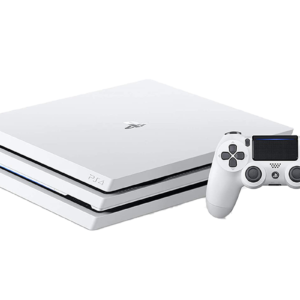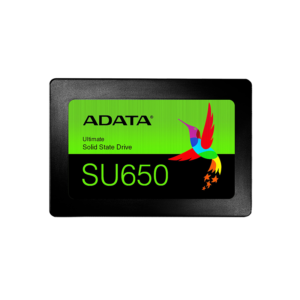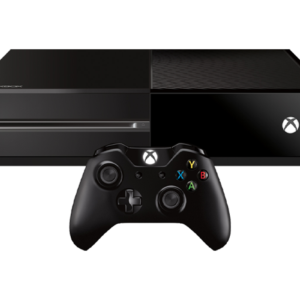As you can see, there are no differences in terms of specifications between the PlayStation 5 and PlayStation 5 Digital Edition. Both have the same custom-made AMD RDNA 2 graphics unit and the 8-core AMD Zen 2 CPU as the Series X and Series S.
The PS5 GPU is clocked higher (2.23GHz) but has fewer compute units (36) than the new Xbox consoles. That results in a total GPU power of 10.28 teraflops, lower than the 12.15 teraflops managed by the Series X, but it’s not quite a direct comparison because the PS5 is capable of variable frequency (GHz).
Even with the CPU, the PS5 is again capable of variable frequency. While the Xbox consoles have two clock speeds — 3.8GHz / 3.6GHz with SMT for Series X, and 3.6GHz / 3.4GHz with SMT for Series S — the PS5 is clocked at 3.5GHz with simultaneous multithreading (SMT).
It’s unclear what will work better, but it will likely vary from situation to situation.
The PlayStation 5 has the same amount of memory (16GB RAM) as the Series X, but 175GB less storage on its solid-state drive (SSD), though the operating capacity for both is unclear.
Microsoft has announced that the Series X and Series S will support Dolby Vision HDR and Dolby Atmos 3D sound for gaming. Sony has its own Tempest 3D AudioTech for the PS5, but there’s no word on support for Dolby Vision HDR for gaming.
As we noted earlier, the only difference between the PS5 and PS5 Digital Edition is that the latter doesn’t have a disc drive. Just as it says in the name, the PS5 Digital Edition is digital-only which means you’ll have to buy and download all your games off the Internet.
You can expand PlayStation 5 storage with any external SSD, as long as it’s as fast as the one inside the PS5. Sony is taking a more open approach in this regard unlike Microsoft, which has partnered with Seagate on an official expansion card.
Lastly, the PS5 is slightly thicker (1.2 cm) and heavier (600 g) than the PS5 Digital Edition due to the 4K Ultra HD Blu-ray drive. They are both much larger than the Xbox Series X, let alone the Series S.
PS5: DualSense controller
While Microsoft is keeping things pretty much the same with the new Xbox Wireless Controller, Sony has gone for a major overhaul with the PS5 Controller. Now called DualSense instead of DualShock, the PS5 controller takes on a whole new shape, but naturally all the buttons are still in the same places you’re used to. This includes the touch bar, though the light bar is now more of an accent.
Sony is also bringing haptic feedback to the DualSense, a generation after Microsoft has had it with the Xbox One controller. Hopefully, with both console parties on board, more third-party developers will now make use of this feature. It’s supposed to offer a more authentic feel when firing a weapon, like the ability to feel the tension of a bow string on your finger with the DualSense’s “adaptive triggers” (that’s L2 and R2).
Additionally, the DualSense controller has a built-in microphone and a USB-C port for charging. The “Share” button is now called “Create”. And yes, the most obvious thing: the DualSense has a black-and-white, two-tone colour scheme to match the look of the console.
Sony hasn’t said if there will be more DualSense colour variants at launch. You will get one with the PS5 and PS5 Digital Edition.
The DualSense controller costs more than DualShock 4 at Rs. 5,990 in India, $70 (about Rs. 5,200) in the US, £60 (about Rs. 5,650) in the UK, CA$90 (about Rs. 4,970) in Canada, €70 (about Rs. 6,100) in Europe, AU$110 (about Rs. 5,730) in Australia, NZ$125 (about Rs. 6,050) in New Zealand, and ¥6,980 (about Rs. 4,900) in Japan.
You might not need to buy additional controllers if you have friends or family joining in, as DualShock 4 controllers and other officially licensed PS4 controllers will work on the PS5, but only with PS4 games.
PS5: Accessories
Sony isn’t dropping support for all PS4 accessories. Officially licensed racing wheels, arcade sticks, and flight sticks will work with PS5 games. The PS Move Motion Controllers, the PlayStation VR Aim Controller, and the PlayStation Camera will also work with supported PS VR games on the PS5. You’ll need a PlayStation Camera adapter on the PS5, which Sony will provide for free to PS VR users.
A new PlayStation HD Camera is shipping with the PlayStation 5, which can capture in full-HD (1080p) and has a built-in adjustable stand that helps you attach it to your TV. Moreover, the new PlayStation HD Camera is capable of removing the background around you and placing you in your gameplay footage, just like a Zoom video call with a virtual background.
If you pick up the PS5 Digital Edition, you will need to download every game you play, as there is no disc slot. Of course, even with the regular PS5, you will still need a good Internet connection to download updates and patches. But with the Digital Edition, you are looking at a greater need for fast broadband.
And with both new PlayStation 5 consoles capable of 4K, that means game sizes are going to increase. The big games today, as with the likes of Red Dead Redemption 2, are already over 100GB. Expect that to be the norm going forward, with download files only going to further soar as we go deeper into next-gen.
Lastly, since the PS5 Digital Edition is digital-only, you can’t share games with your friends. There’s no possibility of reselling games too or playing second-hand games. This is great for game publishers but not so much for consumers. With both Microsoft and Sony refusing to localise PlayStation and Xbox game prices (unlike Steam for PC) in markets such as India, the used games market can help you save quite a bit of money.
You should also look at your PS4 disc games, for those that are offering a free upgrade to their PS5 versions. If you buy PlayStation 5 Digital Edition, you won’t be able to snatch said free upgrade of your PS4 titles, as Sony needs you to insert the PS4 disc in your PS5 to authenticate the purchase. This is not a problem if all your PS4 purchases are already digital.











Reviews
There are no reviews yet.